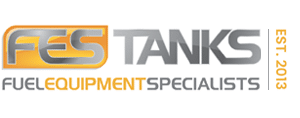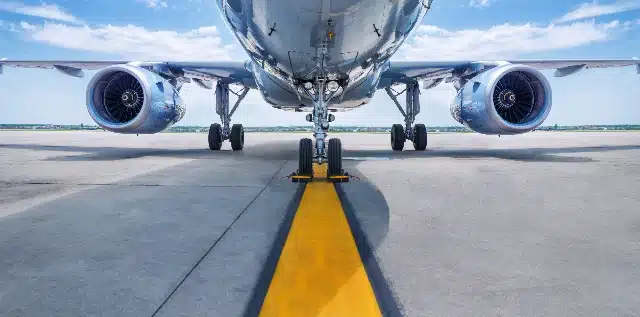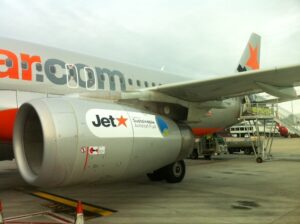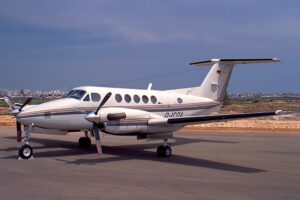Aviation Fuel – Powering machines in the sky
Australia’s demand for aviation fuel is growing as use of air services continues to boom, with current domestic demand for jet fuel sitting at about 770 ML per year based.
It’s not hard to see why, with more than 5.2 million passengers taking off on domestic routes (including charter flights) in Australia in April 2024 alone, while domestic cargo movements totalled 24.9 thousand tonnes in the same month – up 5 per cent on the previous year.
With demand projected to increase by 75 per cent before 2050, understanding aviation fuel and the infrastructure that keeps it in top condition is central to supplying that need – a critical lifeline for businesses in sectors from tourism, passenger and cargo transport to emergency services, farming, scientific services, survey work and defence.
What is aviation fuel?
There are two main types of aviation fuel used in general aviation: jet fuel and AVGAS.
- Jet fuel – including Jet A, Jet A1 and Jet B – is a refined kerosene-based liquid used to power turbine engines including turboprops and jet engines. While there are several main varieties, Jet A1 is the most commonly used jet aviation fuel worldwide because it has a low freezing point. In general, jet fuel is designed to be stable and predictable, including at extreme temperatures.
- Avgas – For smaller propellor and piston-engine aircraft like those used for crop dusting and agriculture, Avgas (short for aviation gasoline) is the fuel of choice. Avgas is highly volatile, because it changes from a solid (liquid) to a vapour state at a temperature usually much lower than room temperature.
- Sustainable Aviation Fuel (SAF) – The CSIRO is working with manufacturers to develop a sustainable aviation fuel (SAF) industry in Australia. Sustainable aviation fuel is a biofuel alternative to fossil-based aviation fuels produced from renewable resources including agricultural waste, animal fats, vegetable oils and municipal waste, and significantly reduces aircraft carbon emissions. Global demand for SAF is expected to underpin an industry worth up to $23 billion worldwide by 2030.
Why is aviation fuel coloured?
Aircraft engines are designed to use a specific grade of fuel and oil, and getting this wrong can mean big trouble including power loss, engine failure and seriously reduced engine. Aviation fuel colours help quickly identify the fuel grades and prevent costly errors.
Civil aviation fuel is produced in three grades and colours – Avgas 100 is green, Avgas 100LL (low lead) is blue and Jet A1 turbine fuel is colourless or straw coloured.
Contamination in aviation fuel
It’s the responsibility of the aircraft operator to ensure fuel used in the plane is not contaminated, degraded or incorrect, so getting storage and transfer right is critical.
Common types of contamination can include water, micro-organisms and mixing fuels.
Water contamination
Water in aviation fuels can be suspended or free. Suspended water appears in the form of droplets – a high concentration will make the fuel look cloudy or hazy. Free water can begin as water dissolved in contaminated fuel. It can also be caused by condensation or leakage in underground tanks or inside the aircraft’s fuel tanks.
Condensation can happen inside a partially filled fuel tank when warmer air above the fuel meets the cooler surface of the tank, often on descent. Standing the plane overnight with partially filled tanks increases the risk of condensation, so the Civil Aviation Authority recommends standing the aircraft with full tanks.
To minimise the risk of water contamination aircraft should be checked before the first flight of the day, after each fuelling and always after taking on board fuel that is potentially contaminated with water.
CASA also recommends that aircraft fuel tanks and sumps be sampled before fuelling to remove condensation, and that any fuel is checked for the presence of water before transfer.
Testing for water can be difficult when refuelling from drums, because it may be difficult to access the lowest point of the drum. Water detecting paste, capsules or testing paper are some common alternative testing methods.
Micro-organisms and organic contamination
Another risk related to water contamination is micro-organisms including bacteria and fungus which can grow in jet fuel when water is present. This can cause slime on the inside surfaces of fuel tanks or dark-coloured contamination at drain points.
Bacteria and fungus can cause serious corrosion in fuel tanks and clog fuel filters, screens and fuel control units.
It’s important to check Jet A1 storage tanks regularly for slime or corrosion.
Biocides can be used to reduce risk.
Incorrect fuel
Contamination with the wrong type of aviation fuel can cause aircraft fuel system or engine damage – an expensive problem – and even result in engine power loss or failure in flight. If Avgas is contaminated with turbine fuel its antiknock and volatility characteristics will be inadequate for reciprocating engines, while turbine fuel mixed with AVGAS can result in damaging lead deposits in the turbine engine. While most turbine engines can operate on Avgas (usually with limitations and extra service required by the engine manufacturer), Jet A1 in a gasoline engine will cause total failure or severe degradation of performance.
If an aircraft is refuelled with incorrect fuel, corrective action must be carried out before operating the aircraft.
Handling aviation fuel
There are strict regulations around handling aviation fuel.
Avgas is highly volatile, because it changes from a solid (liquid) to a vapour state at a temperature usually much lower than room temperature. Splashing volatile fuel in an open container – for example when washing oily parts – or pouring a fuel sample into an open container can create an explosive free fuel mixture in the air.
That’s why all aviation fuel containers, including vehicles, are clearly marked with the grade of fuel they contain. Drums of aviation fuel must also be labelled in accordance with the Australian industry standard.
Having the right fuel transfer equipment is an important part of safe fuel handling.
Getting aviation fuel storage right
Choosing a high-quality aviation fuel storage system is the best way to minimise fuel contamination and keep your fuel, your aircraft and your people safe.
The F.E.S Tanks range of portable, self-bunded double-walled aviation fuel tanks provides a hassle-free solution for both AVGAS and Jet A1 fuel that meets or exceeds Australian Standards, with none of the hassle of cleaning and inspecting underground tanks.
F.E.S aviation fuel tanks are also made without an interior baffle, ensuring a free drainage floor pan and allowing for the safe removal of water from aviation fuel as part of your daily maintenance program.
Whether you’re storing 1000 litres or 100,000 litres, call the expert team at F.E.S Tanks to discuss the aviation fuel storage solution that’s right for you.




